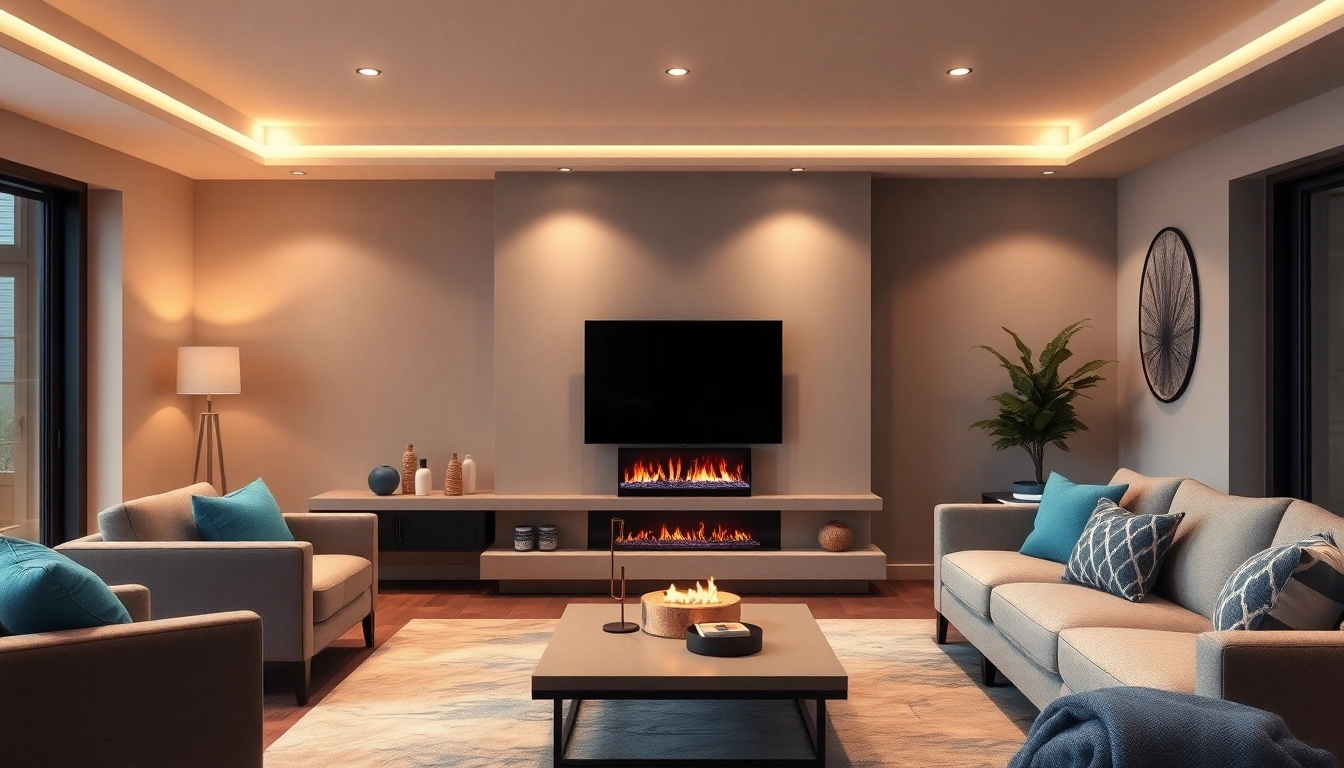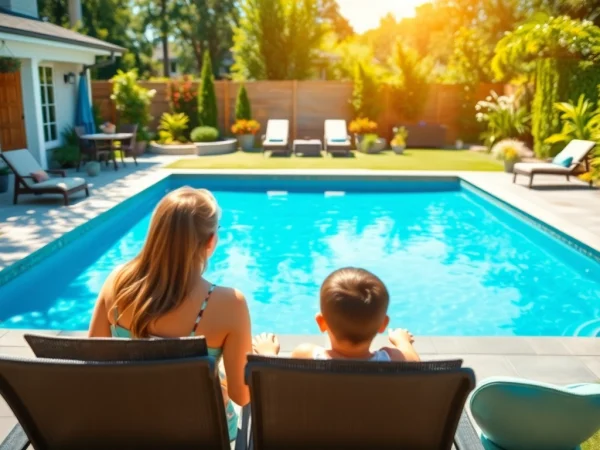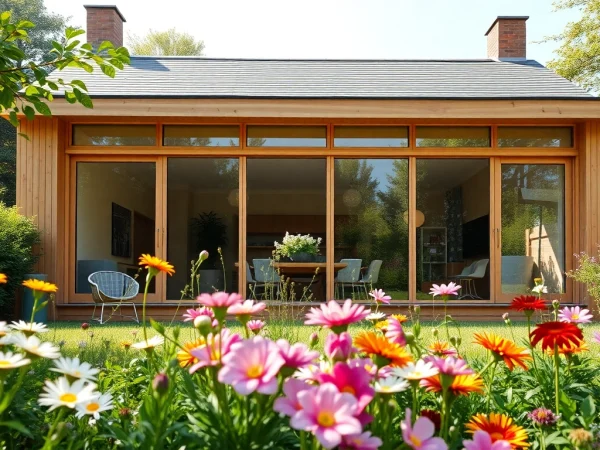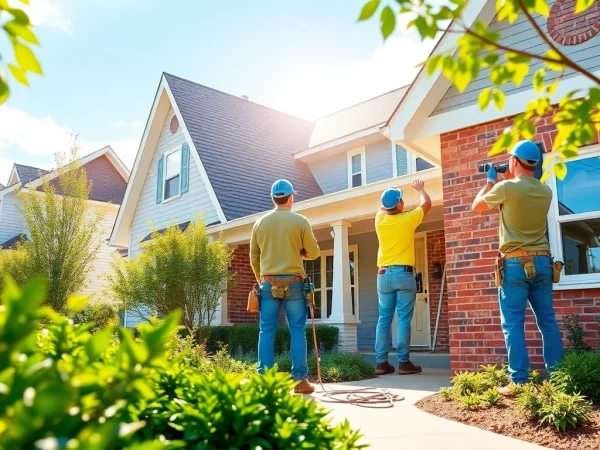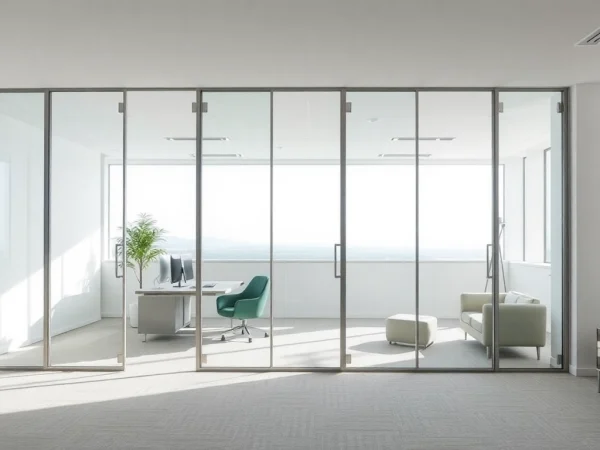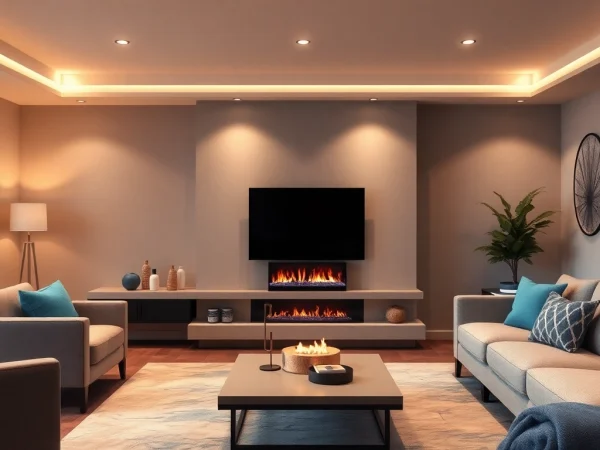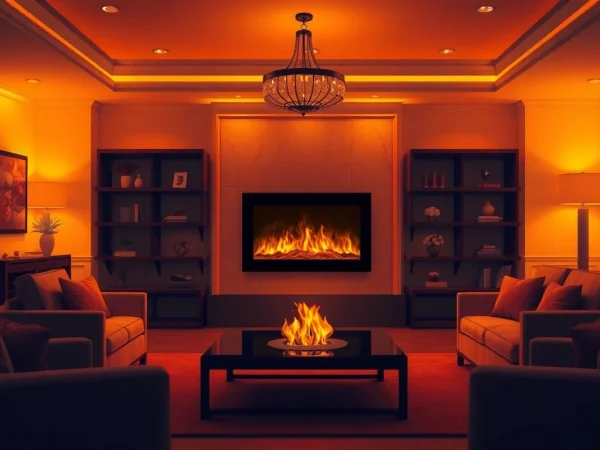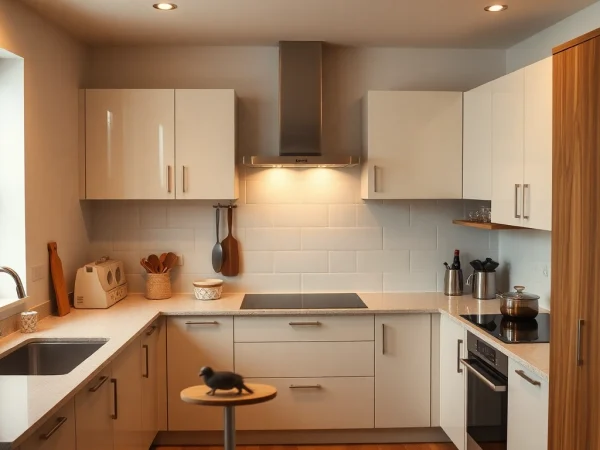Elevate Your Space with Stunning Water Vapor Electric Fireplaces
What Are Water Vapor Electric Fireplaces?
Water vapor electric fireplaces are an innovative solution for adding ambiance and warmth to your home without traditional combustion methods. Utilizing ultrasonic technology, these fireplaces create a realistic flame effect that mimics the look of real flames while emitting no heat. This makes them a versatile option for year-round use, providing a stunning visual display that can enhance the aesthetic of any room.
Unlike traditional fireplaces that require wood, gas, or electric heating elements, water vapor electric fireplace systems operate by creating steam, which is illuminated with LED lighting to produce a lifelike flame effect. The water vapor is generated from tap water, making these units easy to maintain and operate.
Understanding the Technology
The core of water vapor fireplace technology lies in its use of ultrasonic technology. This technique uses high-frequency sound waves to create fine water droplets, which are then vaporized to form a mist. The mist is illuminated by special LED lights that create a stunning flame effect without the heat of conventional fireplaces.
This technology not only offers a captivating visual experience but also serves practical purposes. For example, many models come equipped with humidifiers that naturally increase indoor humidity, combating dry air, especially during winter months. Additionally, since the flames produced are cool to the touch, these fireplaces are particularly safe for homes with children and pets.
Benefits of Water Vapor Fireplaces
Water vapor fireplaces boast several advantages over traditional fireplaces and heating systems:
- Environmental Impact: These fireplaces do not produce harmful emissions like carbon monoxide or particulate matter, making them an eco-friendly alternative.
- Safety: As they generate no actual heat, there is no risk of burns, making them safer in homes with children or pets.
- Versatility: These fireplaces can be used in various settings, including apartments and homes without chimneys since they do not require venting.
- Customization: Many models feature adjustable flame effects and colors, allowing homeowners to tailor the ambiance to their liking.
- Low Maintenance: Maintenance involves simple tasks like refilling the water tank and cleaning the unit, which is less cumbersome than traditional fireplaces.
Common Misconceptions
Despite their growing popularity, water vapor electric fireplaces are often misunderstood. Here are a few common misconceptions:
- They Produce Heat: Many people believe these units provide heat like traditional fireplaces; however, they primarily serve decorative purposes.
- They Are Expensive to Operate: The operational costs are typically lower than traditional fireplaces, as they simply use water and electricity.
- They Are Not Real Fireplaces: While they do not burn fuel, the lifelike flame effects can significantly enhance any living space’s ambiance, serving a similar purpose as traditional fire sources.
Choosing the Right Water Vapor Fireplace for Your Home
Selecting the perfect water vapor fireplace can be a daunting task due to the variety of styles, sizes, and features available. Here are key considerations to guide your decision-making process:
Size and Design Considerations
The first step in choosing a water vapor fireplace is determining the size that fits your desired space. Consider the following:
- Space Availability: Measure the area where you intend to install the fireplace. Look for models that complement your room’s scale and style.
- Style: Water vapor fireplaces come in various designs—from modern and sleek to traditional and rustic. Select one that aligns with your existing decor.
- Mounting Options: Decide whether you prefer a wall-mounted unit, a freestanding model, or one that can be integrated into existing structures, such as a mantel.
Installation Requirements
Water vapor fireplaces provide flexibility in installation since they don’t require a flue or venting system. However, proper installation is crucial for optimal performance:
- Access to Electricity: Ensure your installation location has access to a power outlet, as these units need electricity to operate.
- Water Supply: Some fireplaces might require a water hook-up for continuous operation. Check the specifications of the model you choose.
- Manufacturer Instructions: Adhere to the manufacturer’s guidelines for installation to avoid damage or performance issues.
Budgeting for Your Fireplace
When budgeting for a water vapor fireplace, consider both the initial investment and ongoing costs:
- Initial Costs: Prices for water vapor fireplaces vary widely based on size, features, and brand. Set a budget that aligns with your preferences and desired features.
- Operating Costs: Factor in the costs of water and electricity. Water vapor models are generally energy-efficient, keeping ongoing costs manageable.
- Maintenance Costs: Minimal maintenance is required, mainly involving occasional cleaning and water refills. Ensure you account for any potential replacement parts or filters as needed.
Top Features to Look for in Water Vapor Electric Fireplaces
As with any investment, it’s essential to understand the features that can enhance your experience with a water vapor fireplace:
Flame Realism and Effects
The primary draw of water vapor fireplaces is their realistic flame effects. Look for models that offer:
- Adjustable Flame Height: Some models allow users to adjust the flame height and density, providing a customizable experience.
- Color Options: Choose units that provide different color settings for the flame effect, enhancing the visual appeal further.
- LED Lighting: High-quality LED lighting can amplify the flame effects, producing an even more convincing illusion of fire.
Safety Features and Maintenance
Safety is a top priority with any fireplace. Key safety features to consider include:
- Cool-to-the-Touch Surfaces: Ensure that the exterior remains cool during operation to prevent accidents, especially in homes with children or pets.
- Automatic Shutoff: Look for models that come with an automatic shut-off feature when the water level is low or when the unit is tipped over.
- Built-in Humidifier: Some water vapor fireplaces come with a built-in humidifier, which not only enhances the flame effect but also improves indoor air quality.
Energy Efficiency Ratings
Examining energy efficiency ratings can help determine how economically a fireplace will operate over time:
- Bluetooth and Smart Features: Many models offer connectivity options that enable you to control the fireplace via smartphone apps, adding convenience and ease of use.
- Energy Consumption: Review energy consumption data to ensure the unit operates within your budget and efficiency expectations.
- Manufacturer Ratings: Trustworthy brands will often provide reliable efficiency ratings and product warranties, ensuring the longevity of your investment.
Comparing Water Vapor Fireplaces to Other Options
Understanding how water vapor fireplaces stack up against other fireplace types can help you make an informed choice. Here’s a comparative analysis:
Water Vapor vs. Electric Fireplaces
While both water vapor and traditional electric fireplaces rely on electricity to run, they differ significantly in manipulation of fire and ambiance:
- Ambiance: Water vapor fireplaces offer a more realistic flame that resembles real fire compared to standard electric flame simulations.
- Heat Production: Traditional electric fireplaces provide heat, making them more suitable for heating purposes, while water vapor types are primarily decorative.
- Safety: Water vapor fireplaces are safer for families with children and pets, as the “flames” are cool to the touch.
Water Vapor vs. Gas Fireplaces
Gas fireplaces, typically fueled by natural gas or propane, are another popular option, but they come with different features that set them apart from water vapor electric fireplaces:
- Installation and Venting: Gas fireplaces generally require venting systems, increasing installation complexity, unlike the often easier-to-install water vapor counterparts.
- Fuel Costs: Continuous gas supply can incur significant costs, while water vapor fireplaces only need tap water and electricity.
- Real Flame Experience: While gas fireplaces boast real flames and warmth, water vapor provides a visually enriching flame without combustion hazards.
Environmental Impact Comparison
As public awareness of heating and energy consumption grows, the environmental impact of different fireplace types cannot be overlooked.
- Water Vapor Fireplaces: They are eco-friendly, producing no emissions or pollutants, and using only water and electricity.
- Gas Fireplaces: While cleaner than traditional wood-burning fireplaces, they still produce greenhouse gases and other emissions.
- Electric Fireplaces: They vary in their environmental impact, depending on how electricity is generated; however, they do not produce direct emissions.
Customer Reviews and Experiences
To provide a well-rounded perspective on water vapor electric fireplaces, it’s essential to delve into customer experiences and ratings:
Case Studies of Installed Fireplaces
Real-world examples highlight the effectiveness and appeal of water vapor fireplaces:
- A Contemporary Apartment: In a modern urban space, a homeowner reported that their water vapor fireplace became a focal point in their living room, adding elegance without the need for a traditional hearth.
- A Family Home: Families with children shared positive feedback about the safety features, citing the fireplace as a captivating addition during winter holidays without fear of burns.
- A Cozy Cafe: A local cafe utilized an in-wall water vapor unit to create a comfortable ambiance that attracted customers, turning it into a popular gathering spot.
Benefits Noted by Users
Users often report several advantages once their at-home water vapor fireplaces are installed:
- Improved Aesthetics: Many find that the flames provide an inviting warmth and charm, transforming their living spaces.
- Easy Operation: Users appreciate the simple operation — filling the tank is straightforward, allowing for uninterrupted enjoyment.
- Low Maintenance: Customers enjoy the minimal upkeep required, often sharing that their experience matched or exceeded expectations.
Common Feedback and Suggestions
Constructive feedback from consumers also plays a vital role in shaping product designs and company improvements:
- Water Capacity: Some users suggest increasing the water tank size for extended operation time between refills.
- Control Panel Accessibility: Feedback indicates customers prefer more intuitive controls or smartphone apps for easier adjustments.
- Custom Design Options: Potential buyers express interest in bespoke design options to fit unique home aesthetics beyond standard models.
